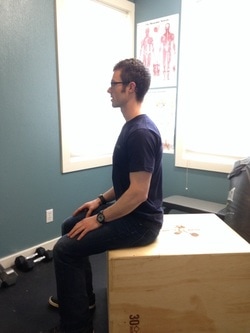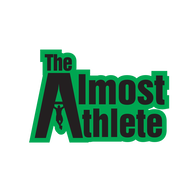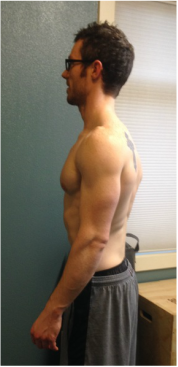|
Posture is where I would like to start. This is one of the most over-used and under-defined terms that we have in the world of health and fitness. What I mean when I say posture or more specifically good posture or ideal/proper posture is the following. When looking at you from the side, or profile view, I should see… A fairly straight imaginary line starting from your ankle bone, lined up below the middle of your knee joint, which should be just below your hip bone (greater trochanter), this line should dissect through your trunk, through the middle of your shoulder joint and directly through your ear. Looking at this from a visual aspect should look something like this…  Practicing good sitting posture Practicing good sitting posture Now, how do we get ourselves in this position, which is a practiced skill, not an automatic habit. Whether sitting or standing, we first want to create a little torque from our contact point to the floor. To do this, simply start with your feet about hip width apart, toes pointed straight in front of you. Pretend that your feet are on a piece of paper and your trying to tear that paper in half by externally rotating your feet on the floor. Take notice of the muscles that contract while performing this exercises. Now you simply engage these same muscles in your feet and your glutes and maintain a very light amount of muscle activation, about 20%, to support good posture. From this position, we now engage our core. This should also be done at a 20% contraction level while maintaining breathing. To get your shoulders, spine, shoulder blades, head and neck in a good position, there are 2 cues that I have found to be very effective with the hundreds of people I have worked with over the years. The first is from weight lifting coach Mark Bell, www.markbellpower.com, when he cues his athletes to bench press. One of his first steps is to grip the bar then pretend you are going to snap the bar in half like you were “breaking a stick”. This will create a similar external rotation torque on the bar but for posture will allow us to position our thoracic spine (rib cage area of spine), shoulder and shoulder blades in the correct position. This should then be done at about 20% muscle contraction throughout the day. The fourth and final component of this posture position that we often speak of is the head and neck position that we can realign with a move we call axial extension...
Axial extension is typically done with a combination of lightly reaching the top of your head towards the sky while also lightly tucking your chin back to restore a neutral cervical spine (neck) position. So, why all the fuss over what good posture is and how to get in this ideal position? Poor posture, which can take place in many different shapes and forms contributing to many orthopedic conditions including but not limited to the following. Shoulder impingement, bicep impingement, rotator cuff tendonitis, tendonosis, tears, spinal disorders, slipped disc, disc bulge, spondylolisthesis, retrolisthesis, headaches, muscle imbalances, poor breathing, TMJ, and others, just to name a few. Now that you know what good posture means and how to get yourself there, it’s time to start making this your new habit. Today at work you will probably spend the majority of your 8.7 hour work day* sitting at your desk pouring over work, responding to emails, and managing correspondences with co-workers. As you progress through your day and subsequently through your week, little to no thought is placed on exactly how you are sitting and the position that you are putting your body in. As the New York Times Bestselling Author Daniel Coyle puts in his book The Talent Code, “Practice doesn’t make perfect, it makes permanent.”. Therefore find ways to practice this new skill throughout your day until you can build this into your neurology and make it permanent. Keep this quote in mind when you find yourself struggling to adopt this position and remember that is has probably taken many years of “practice” to teach your body the posture you are currently in, therefore may take some time to unwind this skill. One suggestion that I have found helpful is to reset your posture (feet screwed into the floor, core engaged, break the stick, with head up and chin tucked) each time I check my watch or send/receive a text message from anyone. These built in reminders, or "habit setters" as I like to call them, can help to do just that. Make this posture one of your new healthy habits. * Disclaimer: Remember to always consult with your physician or physical therapist in regards to starting or changing your exercise routine and in no means is this information meant to diagnose or treat your injury. For full legal disclaimer, see About Me page. *average time spent per day working according to 2013 Bureau of Labor and Statistics of Americans age 25-54 www.bls.gov
1 Comment
11/27/2017 02:46:54 pm
Posture is important not because of what a person looks like when he or she has good posture. Having good posture is important to a person's health because bad posture can cause problems in a person's body. It is important that we do not slouch too much because our spine may be injured. Always practice having your back straight and your chin up high. It really helps to project a good image when you have a good posture and it helps the body to be able to move easily.
Reply
Leave a Reply. |
Author : Jordan ProudfootHere are my thoughts and insights into fitness and wellness to be the best you possible. Archives
February 2019
Categories
All
|


 RSS Feed
RSS Feed
